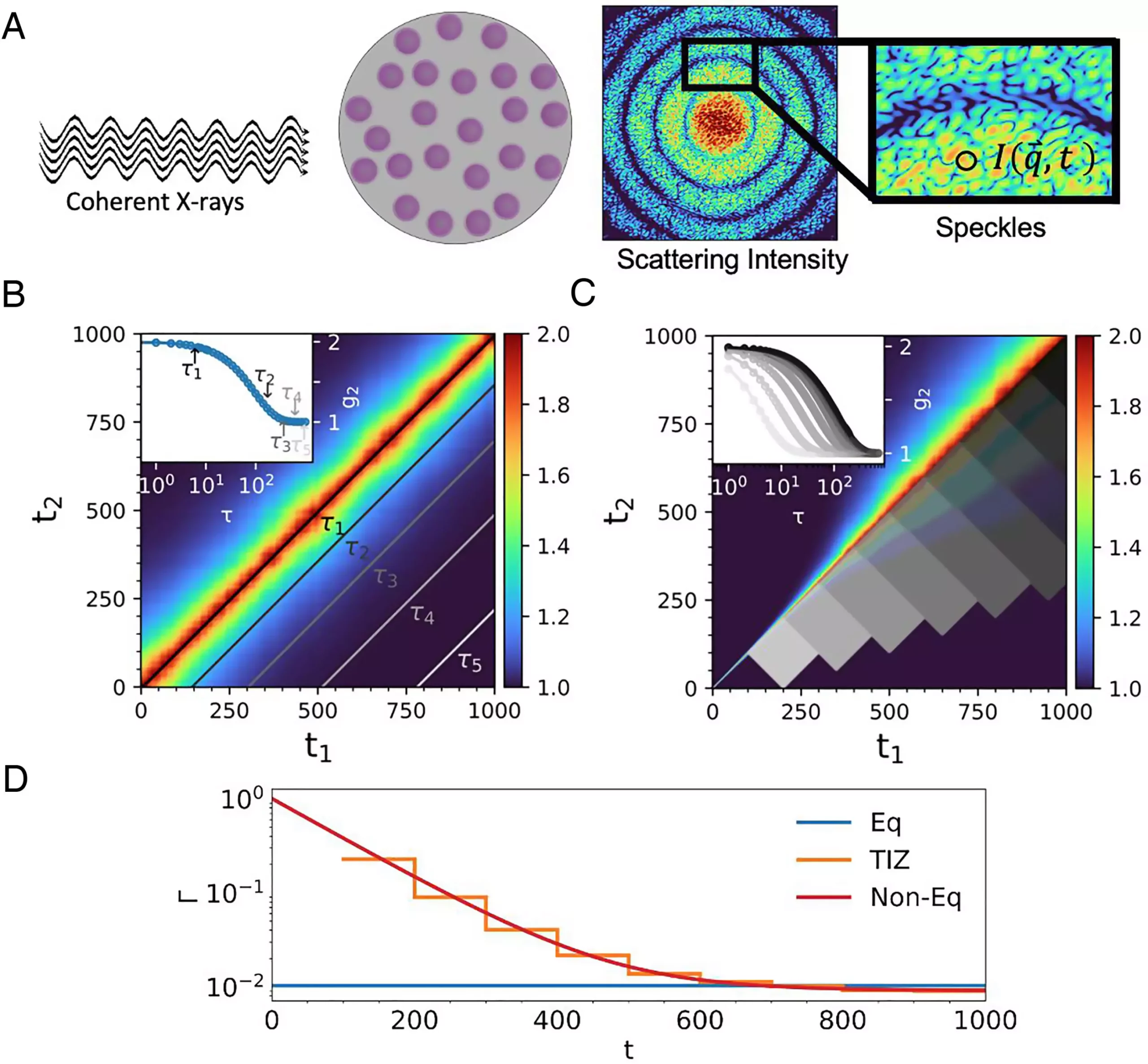For decades, the playful substance Play-Doh has captured the hearts of children worldwide—its squishy, malleable form allowing for creativity and imagination. This iconic toy is more than just a fun activity; it exemplifies a broader category of materials classified as soft matter. This category includes diverse substances such as mayonnaise, certain 3D printer gels, battery electrolytes, and latex paints. Understanding the properties and behaviors of soft matter is critical in various scientific and industrial applications, as these materials are highly sensitive to external stimuli like temperature, pressure, and chemical changes. Recent advancements in nuclear research have shed light on the intricacies of soft matter, paving the way for innovative applications across different fields.
A team of scientists from the U.S. Department of Energy’s Argonne National Laboratory and the Pritzker School of Molecular Engineering at the University of Chicago has made significant strides in understanding the flow properties of soft matter at the molecular level. Their findings, published in the Proceedings of the National Academy of Sciences (PNAS), are anchored in a cutting-edge technique known as X-ray photon correlation spectroscopy (XPCS). This sophisticated method allows researchers to analyze the movements and interactions of nanoparticles within soft materials in real time, revealing the fundamental mechanisms behind their behavior—an area that has long remained elusive to scientists.
Matthew Tirrell, a senior advisor at Argonne and an emeritus professor at the University of Chicago, articulated the nature of soft matter, emphasizing its flexible response to external influences. For instance, consider the behavior of paint: when brushed onto a surface, it undergoes intricate flow patterns at the nanoscale, yet it must seamlessly halt upon completion to prevent dripping and ensure a smooth finish. This complexity highlights the necessity for advanced techniques to explore these phenomena in detail.
Lead author HongRui He, a graduate student pursuing his Ph.D. at the University of Chicago while conducting research at Argonne, articulated the objective of their study: to quantify the intricate fluctuations of soft matter nanoparticles under various external conditions. Previous methodologies often involved averaging data, which unfortunately diluted the nuances of particle interactions and movements. In contrast, the team’s innovative methodology allows for real-time tracking of these behaviors, leading to a more comprehensive understanding of how soft matter responds to applied forces or temperature changes.
One pivotal outcome of this study is the determination of the transport coefficient, a crucial metric that quantifies the flow behavior of a material. Understanding this coefficient is vital for predicting how soft matter will act and adapt over time when subjected to external forces. Utilizing high-energy X-ray beams like those available at the Advanced Photon Source (APS) at Argonne, the team meticulously gathered data reflecting the disorder and dynamics within soft materials.
The researchers focused on a highly intricate soft material comprising a dense mixture of charged spherical particles suspended in a salt solution. The manipulation of this material via shearing—analogous to rubbing thick lotion between one’s hands—provided insightful revelations regarding its flow properties. The initial observations revealed three distinct bands of nanoparticles: fast-moving, slow-moving, and static. Remarkably, within seconds, the group witnessed the fast-moving band dissipate, only for new bands to emerge shortly thereafter.
These observations transcend the capabilities of current analytical techniques and are a significant advancement in the application of XPCS for studying soft matter. This breakthrough not only enhances our understanding of nanoparticle dynamics but also opens avenues for future studies that could address complex natural phenomena, including the dynamics of landslides, earthquakes, and the accumulation of arterial plaque. Gaining insights into the flow patterns at the nanoscale might offer predictive capabilities for larger-scale events.
The Future of XPCS and Implications for Soft Matter Research
The ongoing upgrade to the Advanced Photon Source includes new XPCS-dedicated beamlines designed to utilize the enhanced beam brightness, promising enriched research opportunities for soft matter analysis. The upgraded facility anticipates the commencement of new experiments, possibly as soon as 2024, suggesting an exciting future for advancing our understanding of soft materials.
As the scientific community continues to explore the complexities of soft matter, the implications of these studies extend far beyond materials science. The findings may play a crucial role in addressing pressing global challenges by improving our understanding of natural processes and potentially informing solutions. By unlocking the microscopic behaviors underpinning soft materials, researchers can pave the way for innovations across multiple disciplines, from engineering to medicine, establishing a foundational understanding that could ultimately transform industries.


Leave a Reply